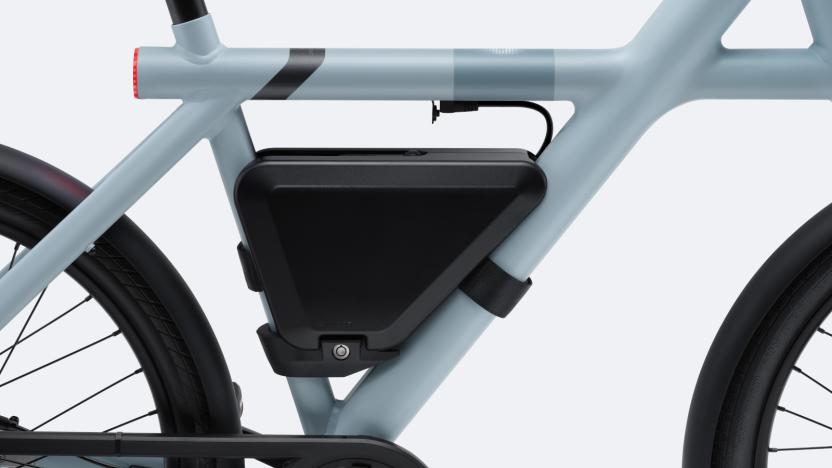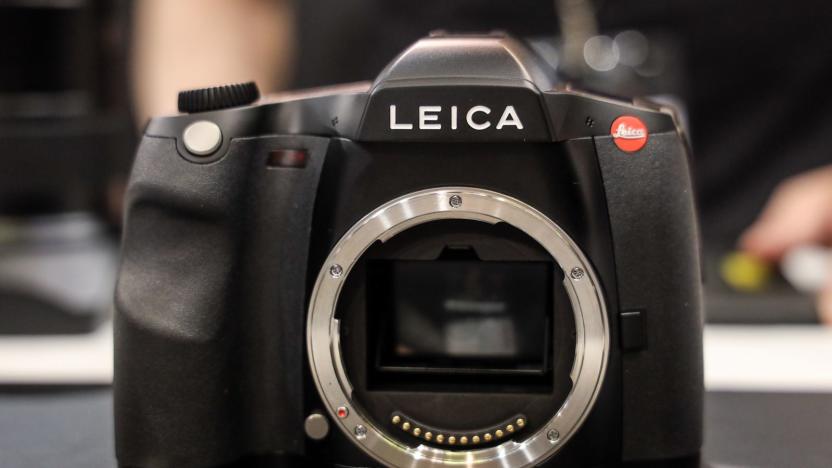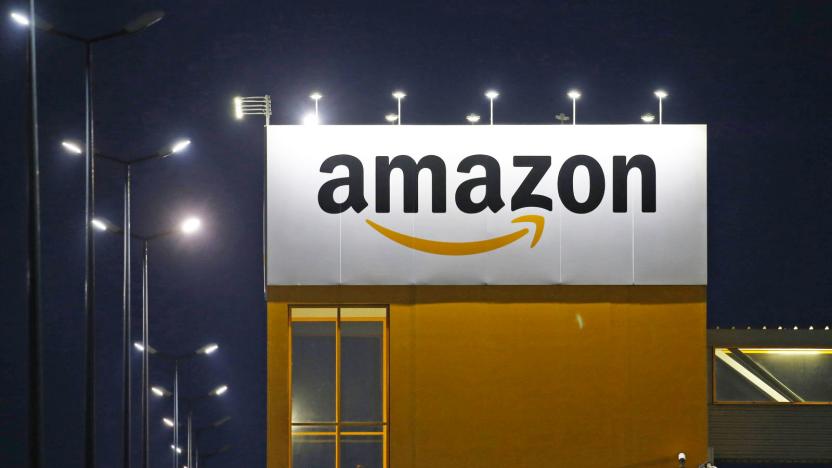S3
Latest

VanMoof's PowerBank can boost its e-bikes' range by up to 62 miles
VanMoof has launched a removable PowerBank for its S3 and X3 electric bikes, giving you a way to add a range between 28 and 62 miles.

VanMoof’s S3 e-bike is better, cheaper and just as stylish
VanMoof’s third generation has a few frustrating flaws, but it’s still one of the most impressive pedal-assist bikes that money can buy.

Analytics firm exposed data for 120 million households
Exposed databases are all too common, but this one may be more serious than most. Researchers at UpGuard discovered that the Australian market analysis firm Tetrad left data for 120 million households exposed in Amazon S3 storage. It appeared to be a blend of data from providers like Experian Mosaic, Claritas/Nielsen's PRIZM as well as Tetrad customers like Chipotle, Kate Spade and Bevmo. The info varied from source to source, but frequently included sensitive details like names, addresses and purchasing habits. Experian Mosaic's data, for example, sorted users into types based on factors like income.

Porn cam network leaked sensitive data for thousands of models
Data leaks by their nature subject people to some kind of unnecessary risk, but this latest could be genuinely dangerous. Researchers at vpnMentor have discovered that a porn cam affiliate network, PussyCash, left nearly 20GB of models' extremely sensitive data exposed in an Amazon S3 bucket. The repository included not only 875,000 keys for different file types (such as photos and videos), but personal info for over 4,000 models worldwide that includes their names, ID photos, passport/ID numbers, release forms and driver's license images. Some of the data could be up to 20 years old, but other info is just weeks old -- there's a very real chance stalkers, extortionists and others could have used this to threaten many of the models.

Political committee left 6.2 million email addresses exposed for 9 years
It's all too common for organizations to leave sensitive data exposed on their servers, but the latest incident might leave some scratching their heads. UpGuard discovered that the Democratic Senatorial Campaign Committee left about 6.2 million email addresses exposed in a badly configured Amazon S3 cloud storage bucket since 2010 -- yes, nine years ago. The data file was apparently meant to exclude people from the DSCC's marketing emails during Hillary Clinton's Senate tenure. Most of them were clearly personal addresses, although there were thousands of .gov and .mil addresses as well.

Leica's S3 is a slick, 64-megapixel medium format DSLR
Leica's biggest news of Photokina was the launch of the L-Mount alliance with Panasonic and Sigma, but it also unveiled a camera. The Leica S3 is a rakish DSLR with a massive 64-megapixel medium-format sensor and 4K video capability that's set to arrive in spring of 2019. I got a chance to handle it at Photokina 2018 and take a few shots (but not keep them), and I can tell you that this is one beautiful-feeling camera. Given the likely price, however, I'm quite sure I'll never own one.

Pentagon left public intelligence gathering data on exposed server
Even intelligence gatherers aren't immune to making mistakes that leave data wide open. Researchers at UpGuard have revealed that the US military's Central Command and Pacific Command left "at least" 1.8 billion collected internet posts exposed on a misconfigured Amazon Web Services S3 server. Some of the data goes as far back as 2009. There doesn't appear to be any private content in the mix, and it's not clear that malicious intruders accessed it before the Department of Defense locked things down on October 1st (after notification from UpGuard). However, the exposure still raises concerns about both the government's approach to security and the kind of information it's collecting.

String a few Galaxy S5s together and you can mine bitcoin
Samsung read the last e-waste report from Greenpeace too, and likely wasn't too happy about the slamming it got from the organization. Which leads us to the Korean electronics juggernaut's system for upcycling old phones. Specifically, the company rigged a bunch of them together and turned them into a bitcoin mining contraption. According to Motherboard, Samsung strung 40 Galaxy S5 together to mine recently, and apparently just eight of them wired together can mine in a way that's more power-efficient than a desktop computer.

Samsung finally has an LTE model of the Gear S3 Classic
If you're in the market for a new wearable with a retro look, Samsung today announced that its Gear S3 Classic smartwatch is getting 4G LTE connectivity. The original Classic lacked this feature, opting for WiFi instead. S3 fans had to go with the Frontier version if they wanted LTE.

The Engadget Podcast Ep 30: I Can Change
After surviving The Great AWS Outage of 2017, managing editor Dana Wollman and senior editor Devindra Hardawar rejoin host Terrence O'Brien to debate some of the biggest tech stories of the week. First they'll pit YouTube's live TV offering against its competitors, then talk through Twitter's new tools for fighting online harassment. Plus they'll address the latest controversy surrounding Uber CEO Travis Kalanick and discuss whether or not it's time for him to resign. Then they'll turn their attention to Nintendo's Switch, Zelda and where the console still needs to improve. They'll also briefly recount their own history with Nintendo's machines and gaming in general. Plus Terrence threatens to fight Devindra for his Switch

Amazon admits that a typo took the internet down this week
The Great Amazon Web Services Outage of 2017 is behind us. Now, Jeff Bezos' golden child is ready to explain what happened. Turns out, what took Giphy, Medium, Slack, Quora and a ton of other websites and services down was a typo. As Amazon explains it, some of its S3 servers were operating rather sluggish, so a tech tried fixing it by taking a few billing servers offline. A fix straight from the company's playbook, it says. "Unfortunately, one of the inputs to the command was entered incorrectly and a larger set of servers was removed than intended." Whoops. As for why the problem took so long to correct, Amazon says that some of its server systems haven't been restarted in "many years." Given how much the S3 system has expanded, "the process of restarting these services and running the necessary safety checks to validate the integrity of the metadata took longer than expected." Amazon has apologized and promises to do better in the future, at least, saying it has altered the at-fault tool (the code, not the employee) so it removes capacity slower. Beyond that, it is adding measures to stop so many being taken offline at once.

Amazon outage breaks large parts of the internet
If your favorite website or internet service isn't accessible today, it's probably not just you. Amazon Web Services' S3 cloud storage is experiencing "high error rates" that have caused chaos among many of the sites that depend on AWS to work. Our own website is one of them, but the failure has also affected some or all of Giphy, Medium, Slack, Quora and a slew of other websites and apps you likely use. Some connected home devices aren't working correctly, either. Even Amazon's ability to report problems was broken for a while -- the AWS dashboard wasn't changing color because its issue was "related" to S3's problems.

Visualized: VIA's versatile video wall signage solution (video)
VIA Technologies isn't a name that often pops up on Engadget, but its latest video wall signage solution deserves a shout-out. The idea's simple: you can output a 4K x 2K footage to an array of thin-bezel 1080p LCDs -- powered by S3 Graphics cards -- arranged in any way you like, including the orientation of each monitor. While the Taiwanese company wasn't keen to show off too much of its backend system, we were given a glimpse of its S3 MagicView software, which lets you easily fit one or multiple clips across a carefully aligned canvas corresponding to the LCDs. Check out our video after the break and you'll get the idea. (HTC and VIA are both chaired by Cher Wang, so it's no surprise to see the latter displaying HTC ads for its signage demo. Wang's husband, Wen-Chi Chen, is the President and CEO of VIA.) A complete system similar to the above two -- either with eight 46-inch panels or fifteen 42-inch panels -- could cost between NT$3 million (about US$102,000) to NT$4 million (US$136,000), and it's also available for rental. VIA said it's targeting the likes of churches, schools, cinemas and shops with its range of signage solutions, some of which can be powered by the company's Android PCs to reduce costs.

Audi's LTE S3 Sportback at European dealers now, 4G A3 hits US next spring
We knew Audi's 4G-enabled rides were coming, but not exactly when. That changes now, as the company has announced that the S3 Sportback is hitting dealer lots in Europe starting today. Us Yanks will have to wait until next spring to use long term evolution speeds with the Audi Connect infotainment system, and even then it'll be in the A3 sedan, not its sportier cousin. According to GigaOM, Europeans can access LTE from any carrier they choose, whereas domestic options remain ambiguous. The German automaker said that stateside, 4G connectivity will most likely be tied to a specific operator, similar to how smartphones are optimized for each carrier. Negotiations as to which "carrier or carriers" will supply mobile broadband are still up in the air too, with an announcement promised for a later date. We'd like to have pricing info then, too.

Audi S3 Sportback gets built-in LTE, available in other models this fall
Audi was late to the party with an in-car hotspot, but it may have beaten the competition to built-in LTE. High-speed mobile broadband is now a feature available to S3 Sportbacks from July (you'll need to provide your own SIM), with other A3 variants catching up in November. The company's Audi Connect infotainment system benefits from this boost, and that LTE connection can be shared with passengers looking to stay under their data caps. No matter what kind of speed freak you are, you've now got a data connection to match the car's quarter-mile prowess.

Acer Aspire S7 Ultrabook refreshed with a WQHD screen, S3 gets a total makeover (hands-on)
It was a year ago at Computex that Acer unveiled the Aspire S7, a skinny sliver of a thing that turned out to be one of our favorite Ultrabooks of 2012. Now, 12 months later, the company is unveiling... the Aspire S7. A much-improved S7, to be precise. Going into the second half of the year, there's only to be a 13-inch version (the 11-incher's been discontinued), and it has much the same industrial design, with a lightweight chassis and Gorilla Glass lid. The difference is that it will now be offered with a 2,560 x 1,440 screen, which will be standard in certain regions, like Europe. (Elsewhere, a 1080p IPS panel will continue to be the base option.) As you'd expect, Acer's upgraded the S7 to Haswell CPUs (Core i3, i5 and i7), but it also squeezed in a bigger battery -- 47Wh, up from 35Wh. Between that bigger cell and new chipset, Acer is rating the battery life at seven hours, which, if true, would correct one of the OG model's biggest shortcomings. Rounding out the list, Acer moved the mics to the front, and also updated the cooling system with the promise of less fan noise. Meanwhile, Acer thoroughly revamped the mid-range S3 Ultrabook so that it looks more like the S7. The main differences are that this has no Gorilla Glass on the lid, and the entire machine is noticeably heavier (1.67kg vs. 1.3). Part of the reason for that chunkier shape is that it will be offered with beefier components, including optional NVIDIA GT735M graphics and a 1TB hard drive (you can also get it with an SSD). Additionally, the S3 steps up to Haswell CPUs, along with a 1080p IPS touchscreen -- the same kind that the S7 had when it first launched. Design-wise, as we said, it looks like the S7, particularly with the lid shut, and it's now made from one piece of aluminum, instead of several. The keyboard looks different from the S7's, though, and is also a bit clackier, for whatever reason. In Europe, at least, the Aspire S7-392 will start at €1,450, and the S3-392 will go from €999. Both will arrive in July. No word yet on US pricing. For a closer look, check out our hands-on photos and video, both embedded after the break. Update: US pricing for the S7 will start at $1,400 and go up to $1,700, depending on the configuration.

Lenovo ThinkPad S3 and S5 teased, show off aluminum 'floating design'
Starting to get bored of the ThinkPad's classic look but not keen on the Edge series? Then we have good news for you! Earlier today we received a couple of photos that show off two upcoming Lenovo Ultrabooks: the 13-inch ThinkPad S3 (codename "Labatt") and the 15-inch ThinkPad S5 ("Guinness"). As you can see above and after the break, both aluminum laptops feature a new "floating design" that might have taken a page out of Samsung and Vizio's book: shaving off the front outer edges of the bottom side to create that slim and floating illusion. Also, these will apparently come with either a black or silver lid. Some folks on Sina Weibo have received other teaser photos of the ThinkPad S5, with one confirming the presence of JBL stereo speakers. The funny thing is Chinese website Yesky reported on a charity auction that actually sold limited editions of the S3 and S5 earlier this month, but those unannounced Ultrabooks went under everyone else's radar. If you're curious, Yesky speculates that a launch is due in China at the end of this month, but you'll have to stay tuned for the prices and specs.

Star Trek: TNG Season 3 Blu-ray trailer appears, PADD iOS app gets an update
If you're a Star Trek: The Next Generation fan who bypassed seasons one and two waiting for the pivotal third season to arrive on Blu-ray, you can finally get a taste of the experience in high definition. While you're enjoying memories of the Borg, season-ending cliffhangers and all the other highlights of season three with this new trailer, you can also check out an updated version of the PADD app that's out on iPhone and iPad. Originally launched in 2011 to bring home a database of Star Trek info in true TNG form, version 2.0 brings an additional 170 entries, Siri-powered voice search, messages from Starfleet, a smaller size and the ability to live update content in the future. Check after the break for the trailer and beyond the source link for the apps (still $4.99 on iPad / $1.99 on iPhone.)

Arq cloud backup adds low-cost Amazon Glacier support
If you back up your Mac to Amazon S3, you may be familiar with Arq online backup for Mac. Arq (US$29) enables you to store your data to your personal Amazon Web Services account. All charges incurred stay between you and S3; Haystack Software never sees your data or your billing. The backups use an open documented format with encryption that you control. You can even grab individual files from your backups on-the-go using the free iOS client. Amazon Glacier Now, Arq has added support for Amazon Glacier. A lower-cost alternative to S3, Glacier lets you store data at a fraction of the price, e.g. $0.01/GB/month vs $0.125/GB/month. (These rates do vary somewhat based on bulk use and other factors.) Glacier was designed for rarely accessed data with flexible retrieval times. Instead of instant access, you request a "job" that typically completes within a few hours. This allows Amazon to trade-off access loads for price. You pay less but you may have to wait for your data. This makes Glacier the perfect budget solution for items that you want protected but that you rarely access such as baby pictures, old blog archives, completed work projects and so forth. You choose the destination for each folder you back up, selecting either S3 or Glacier. Arq's backup set list indicates where each item get backed up to. Here, the destination for this iPhoto library is Glacier. Arq provides incremental backup support, only updating changes like Time Machine does. It runs a background daemon that monitors the folders you've selected. Overall, you choose whether to back up every hour or every day. From your point of view, there's no real difference in backing up to S3 or Glacier. You simply choose which destination you wish to use. Arq and Your Budget Arq is sensitive to your budget needs for both S3 and Glacier backups, providing excellent consumer feedback and planning. For S3, you tell it how much you wish to spend per month on data storage. Arq trims away older backup versions to stay within that budget. With Glacier, you choose when and how to download data back from the Amazon servers so your expenditures stay low. You don't specify an exact budget number with Glacier the way you do with S3, and there's a couple of reasons for that. First of all, Glacier is way cheaper overall. So there's not as much of a compelling motivation for enforcing stored-data limits the way you do with S3 in Arq. You can send up a lot more data and it's not going to kill you financially. Second, Glacier imposes early deletion penalties that can add unneeded costs to your monthly bill. Arq knows that you'll want to avoid that. For Glacier, instead, you budget by choosing how quickly you want to restore. Glacier uses a tiered retrieval fee. You pay based on your peak hourly retrieval rate over a month. If you need data fast, you pay for it. So Arq lets you tweak your download speed to limit how much this fee will be. Lower the speed and your retrieval fee for the month goes down as well. Tiered retrieval fees don't apply to S3. With S3, you can grab data whenever and however you need it. Your costs reflect standard S3 data transfer rates. You may restore on a file-by-file basis or recover entire folders. Conclusions Arq's 3.0 update is a terrific addition to an already excellent tool. If you haven't already checked out Arq, you can test it out free for 30 days. It offers a great "bring your own storage" solution that leverages Amazon's S3 and Glacier web services. Glacier support is now live. Existing users can upgrade to 3.0 through a $15 in-app upgrade. Choose "Check for Updates" from the Arq menu.

Amazon launches Glacier archiving service, a cheap way to put your files on ice
Amazon's S3 cloud service has proved a popular proposition, with many large web enterprises happily depending on it (most of the time) to serve up its content. Now, the internet retail giant is offering a similar product, aimed squarely at archives, called Glacier. The idea seems pretty simple, starting from a penny, you can store 1GB of data on the firm's servers for one month. You'll only pay for what you store, and there are no upfront costs. Thinking this sounds like a cheap way to host your website? Well, maybe not, as retrieval requests are sent to a queue, and won't be available to download for a few hours. There's no limit on the amount of data you can store though, which is not surprising, but each individual archive does have a 40TB limit -- so those DNA back-ups are off the menu. Retrieval is priced differently, with 5 percent of your storage (pro rata) downloadable for free, but beyond that you'll have to pay. The service is available from today, with storage locations in the US, Europe and Japan. Full details of pricing can be found via the source.










